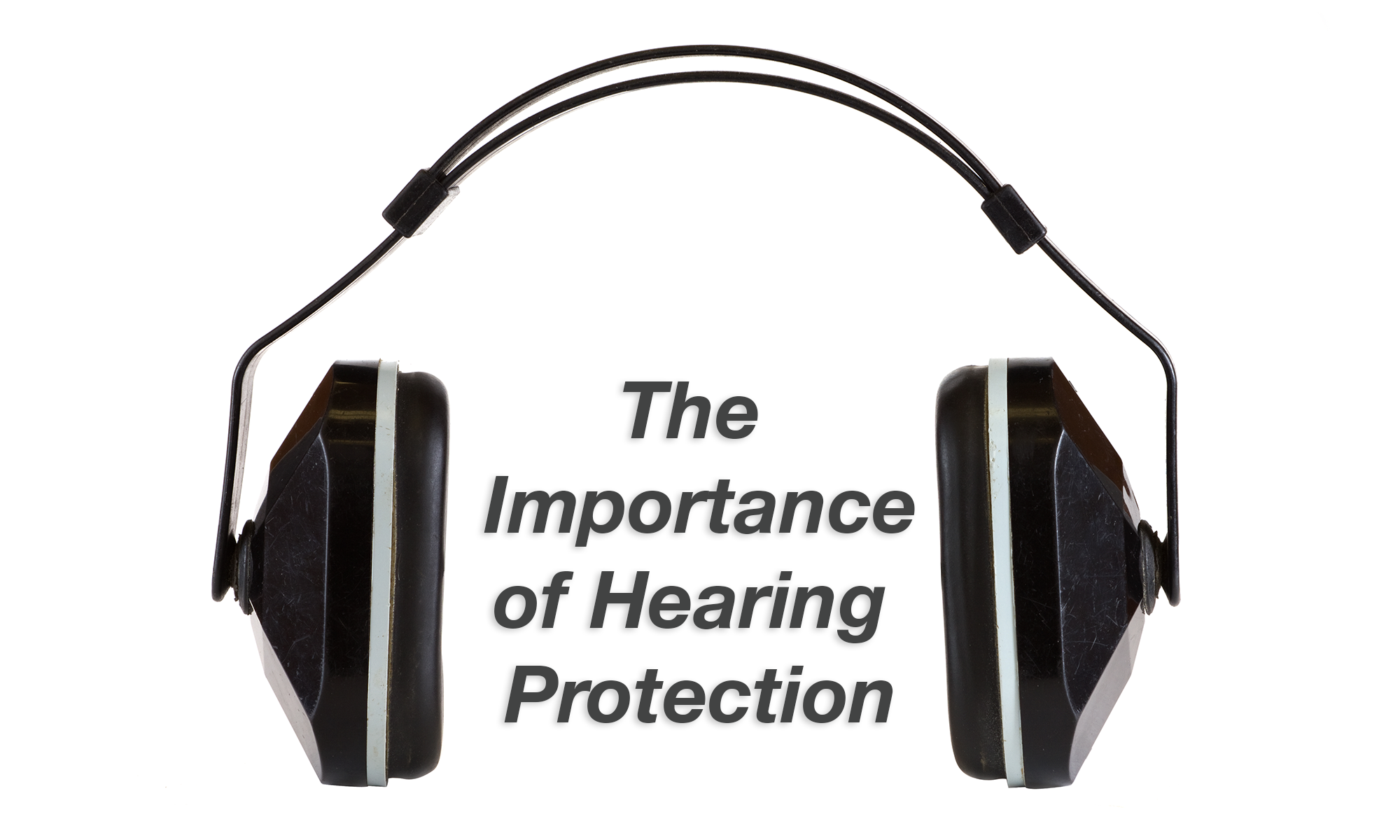Introduction
The world in which we live is becoming an increasingly noisy one, particularly in developing countries where rapid population growth and heavy industrialisation is leading to an increase in daily noise levels. This increase in noise levels may seem to some as just an accepted part of life, but unfortunately these increases, particularly in the average working environment, can lead to lasting health issues.
According to the HCN (1999) and as cited by the WHO (2004), high levels of noise can have a number of impact on the health and general wellbeing of individuals with annoyance, hypertension and hearing loss being the effects most studied.
This article will focus primarily on hearing loss as caused by long term exposure to noise in the workplace, the impacts that hearing loss can have on daily life and the measures and equipment that can be employed to minimise its occurrence.
Causes of Hearing Loss
Noise-Induced Hearing Loss (NIHL) is one of the hidden health costs of today’s workforce. While musculoskeletal injuries are frequently at the forefront of work safety programs, hearing loss is a problem that is often overlooked.
According to NIOSH (1998), over 30 million workers in America alone are subjected to hazardous levels of noise in the workplace while figures from the UK Health and Safety Executive (2015) showed that around 20,0000 workers in the UK suffered from NIHL in 2015.
Recent industry studies in the US showed that the manufacturing and construction industries account for over 65% of work-related NIHL cases.
The effects of loud noises on hearing can build up gradually over time or can be, in severe cases, immediate. Very loud noise levels can lead to the temporary collapse or flattening of hair cells in the inner ear. Depending on the noise level, strength and length of exposure, the resulting loss of hearing can be either temporary or permanent. Extremely loud noises, such as explosions or gunshots can cause immediate and permanent hearing loss if it results in a perforation of the eardrum.
Table 1 – Recommended Maximum Weekly Exposure (NIOSH, 1998)
| Sound Level (dB) | Exposure Type | No Protection | Using ER 20s |
| 60 | Conversation | Safe | – |
| 80 – 85 | Noisy Resturant Vacuum Cleaner |
40 hrs | Safe |
| 88 | Circular Saw
Loud Party Motorcycle |
20 hrs | Safe |
| 94 | Subway
Riding mower |
5 hrs | Safe |
| 97 | Live band
Sporting Event |
2.5 hrs | 40+ hrs |
| 100 | Chain Saw | 1.25 hrs | 40+ hrs |
| 112 | Rock Concert | 5 Mins | 8 Hrs |
| 115 | Ambulance Siren | 2.5 Mins | 4 Hrs |
| Above 125 dB you are at risk for any period without maximum protection | |||
| 140 | Jet engine
Gun shot Firecracker |
Instant Loss | |
Consequences of NIHL
Typically, the first effect of exposure to excess noise is an increase in the threshold of hearing, as assessed by a hearing test. Because hearing impairment is often gradual, an affected worker may not notice changes in hearing ability until there is a large threshold shift, therefore it is important for workers that are exposed to high levels of noise to undergo routine hearing tests. NIHL is irreversible and increases in severity with continued exposure, so early detection and mitigation is key to controlling any continued decline.
According to the WHO the consequences of NIHL include:
- Social isolation;
- Impaired communication with co-workers and family;
- Decreased ability to monitor the work environment (warning signals, equipment sounds);
- Increased injuries from impaired communication and isolation;
- Anxiety, irritability, decreased self-esteem;
- Lost productivity;
- Expenses for workers’ compensation and hearing aids.
PPE for Hearing Protection
To choose the right hearing protection for your needs it is important to understand the noise levels that you work in. NIOSH and other safety bodies recommend no more than 8 hours of exposure to noise levels of around 80dB. Therefore understanding the level of noise you are exposed to is important.
Often it is possible to find out from manufacturer specs how many decibels of noise a piece of equipment produces, though other environmental factors, such as the general environment (indoor, outdoor, types of walls, etc.) can affect the actual decibel level experienced by those in proximity to the machinery or work being conducted. A sound meter can be used to get an accurate reading of environmental sound levels and there are some smart phone apps available that can also give a general idea of the ambient sound level, though these apps may not be as accurate as a purpose built sound meter. You can also refer to Table 1 for a general idea of the sound levels in various working conditions.
There are two primary types of hearing protection, with variations of each available:
- Ear Plugs
- Chorded
- Banded
- Disposable
- Custom
- Ear Muffs
- Overhead
- Helmet mounted
Both ear plugs and earmuffs offer hearing protection, though ear plugs offer more. The Noise Reduction Rating for ear plugs ranges between 22 and 33 dB, while ear muffs range between 20 and 30 dB. When the situation requires, both can be used together to offer even greater reduction in noise levels.
NIOSH recommends the following formula for calculating a more accurate noise reduction rating: (NRR – 7)/2. So using this formula, an ear plug with a rating of 30 dB would be (30-7)/2 = 11.5. If you are working in an environment where noise levels are 90dB, the earplugs would reduce the decibel level to 78.5, under the 80 dB recommended maximum level.
Table 2 – Comparison of Hearing Protection
| Ear Plugs | Ear Muffs |
| Advantages:
· Small and easily carried · Convenient to use with other PPE (can be worn with ear muffs) · More comfortable for long-term wear in hot humid work areas · Convenient for use in confined work areas |
Advantages:
· Less attenuation variability among users · Designed so that one size fits most head sizes · Easily seen at a distance to assist in the monitoring of their use · Not easily misplaced or lost · May be worn with minor ear infections |
| Disadvantages:
· Requires more time to fit · More difficult to insert and remove · Requires good hygiene practices · May irritate the ear canal · Easily misplaced · More difficult to see and monitor usage |
Disadvantages:
· Less portable and heavier · More inconvenient for use with other PPE · More uncomfortable in hot, humid work areas · More inconvenient for use in confined work areas · May interfere with the wearing of safety or prescription glasses: wearing glasses results in breaking the seal between the ear muff and the skin and results in decreased hearing protection. |
Conclusion
Failure to address noise issues in the workplace can result in long term health issues, lower productivity and can even lead to additional accidents in the workplace. It is therefore of vital importance that workers have the appropriate hearing protection and training in its use to ensure their continued safety.
Samson Tiara is here to help with this important safety issue. We provide a training program for Hearing Protection, which helps workers understand and identify the risks associated with working in a loud workplace and the different types of hearing PPE and their correct usage. If you would like to find out more about how we can keep your workforce safe please contact us at marketing@survival-systems.com.
References and Further Reading
Assessing the burden of disease from work-related hearing impairment at national and local levels, WHO, 2004
http://www.who.int/quantifying_ehimpacts/publications/en/ebd9.pdf?ua=1
Hearing Protection, Industrial Safety & Hygiene News, 2008
http://www.ishn.com/articles/87286-hearing-protection-in-construction-still-lags-says-labor-safety-leader-2-34
Hearing Safety: Building a Hearing Conservation Program, Optimum Safety Management, 2015
https://www.oshasafetymanagement.com/blog/hearing-safety-building-a-hearing-conservation-program/
Managing Noise and Preventing Hearing Loss at Work, Safe Work SA
https://www.safework.sa.gov.au/show_page.jsp?id=113699
Noise-Induced Hearing Loss (NIHL) in Great Britain, Health and Safety Executive UK
http://www.hse.gov.uk/statistics/causdis/deafness/index.htm
OSHA 3074, United States Department of Labor, 2002
https://www.osha.gov/Publications/OSHA3074/osha3074.html
The Facts on Hearing Loss, HearNet Online
https://hearnet.org.au/hearing-loss/facts-on-hearing-loss
The Importance of Hearing Protection, Etymōtic
https://www.etymotic.com/technology/ihp
The Importance of Noise Protection in the Work Place, Total Safety, 2016
https://www.totalsafety.com/insights/the-importance-of-noise-protection-in-the-workplace/
The Shocking Data About Noise Induced Hearing Loss in the Workforce, Audicus, 2014
https://www.audicus.com/the-shocking-data-about-noise-induced-hearing-loss-in-the-workforce/
What Industries Case the Greatest Amount of Hearing Loss?, Workers-Comp-News.com
http://www.workers-comp-news.com/industries-hearing-loss.php
5 Tips for Choosing the Right PPE Hearing Protection, Xamax, 2017
http://blog.xamax.co.uk/5-tips-for-choosing-the-right-ppe-hearing-protection





